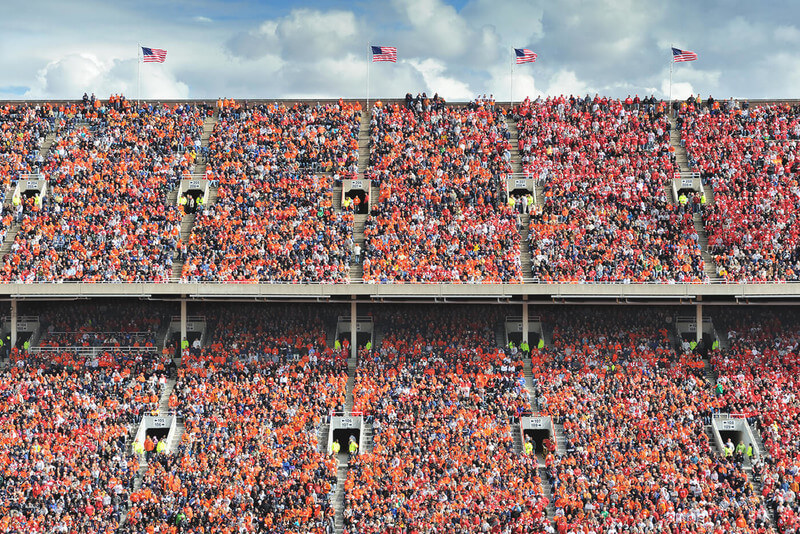Who's in the Pac 12? Latest Pac 12 Changes

The Pac-12 Conference is no stranger to change. However, it’s now in a precarious position with an uncertain future. We explain this dramatic shift, why it happened, and who’s left in the Pac-12 now.
A history of changes in the Pac-12
During its more than 100 years of existence, the Pac-12 has grown and evolved. In 1915, it was initially founded as the Pacific Coast Conference (PCC) but later became the Athletic Association of Western Universities (AAWU), the Pac-8, the Pac-10, and finally, in 2011, the Pac-12.
Throughout all of these changes, the conference was known for its strong athletic and academic traditions, particularly in football and basketball. Whether it will return to its full glory is a topic of debate.
The two remaining Pac-12 schools (2024-2025)
Only two members remain in the Pac-12: Oregon State and Washington State. This trimmed-down membership roster came about after a wave of conference realignments, which began when USC and UCLA announced plans to join the Big Ten.
Subsequently, eight schools, including USC, UCLA, Oregon, Washington, Arizona, Arizona State, Utah, and Colorado, moved to other conferences, like the Big Ten and Big 12.
Oregon State and Washington State are now left to explore their future options, which could involve rebuilding the conference, merging with others, or finding new affiliations to sustain their athletic programs and maintain their competitive edge.
Why did this happen to the Pac-12?
Many attribute the Pac-12's most recent changes to a history of poor media rights negotiations and the rapidly changing landscape of college sports.
For years, the Pac-12 lagged behind conferences like the SEC and Big Ten in its ability to secure revenue from television deals. This shortcoming frustrated member schools, leading to many choosing to find better opportunities in the remaining conferences.
Greater stability and the advantages of being in more prominent conferences also contributed to the Pac-12’s inability to retain members. Unfortunately, these weaknesses may have ended the Pac-12’s competitiveness in college athletics.
What’s next for Oregon State and Washington State?
The two remaining schools are facing serious financial and competitive challenges now.
Without the revenue-sharing benefits of membership in the big conferences, both schools will lose a significant amount of money. This loss will reduce their athletic budgets and ability to fund sports programs, facilities, and scholarships.
Being one of the two colleges left in the Pac-12 could also compromise their recruiting efforts. The best athletes usually prefer signing with schools in prominent conferences because of the greater media exposure, athletic competition, and post-graduation opportunities.
Additionally, students consider a school’s culture when deciding where to apply. For some students, a university with a strong competitive sports culture is a must. Since Oregon State and Washington State will have athletic schedules with reduced rigor, student enrollment, fan engagement, and game attendance could suffer.
To read more, we recommend this journal article from Harvard Law about how bundling conference broadcast rights could harm student athletes.
What's happening with the Big Ten colleges?
To learn which colleges joined the Big Ten this year and what it means for that conference, click the following link to read our piece on who is in the Big Ten now.
Will a Big Ten or Pac-12 college be right for you?
This article discussed Pac-12 schools, which are just two of the country's many outstanding colleges and universities. If you are a high school student planning to go to college, you'll want to learn about the many other colleges, too.
To get a curated list of perfect-match colleges based on the attributes that are most important to you —from budget to academic majors, the school's location, campus services, and more, click the link below and create a free Appily account.